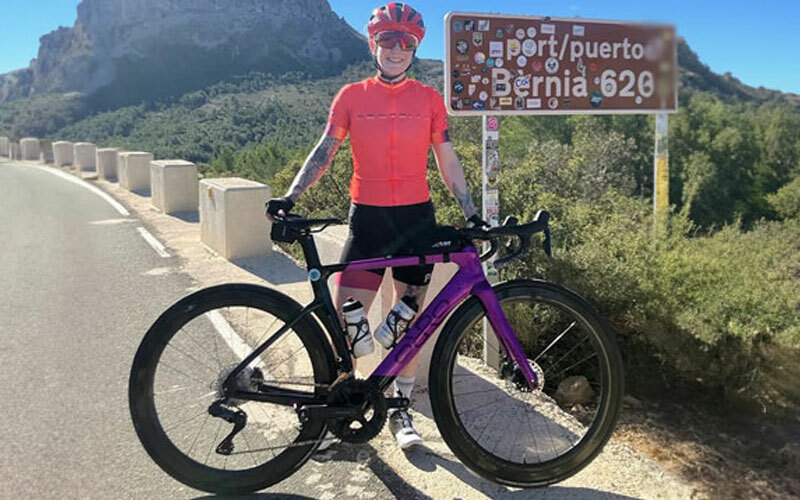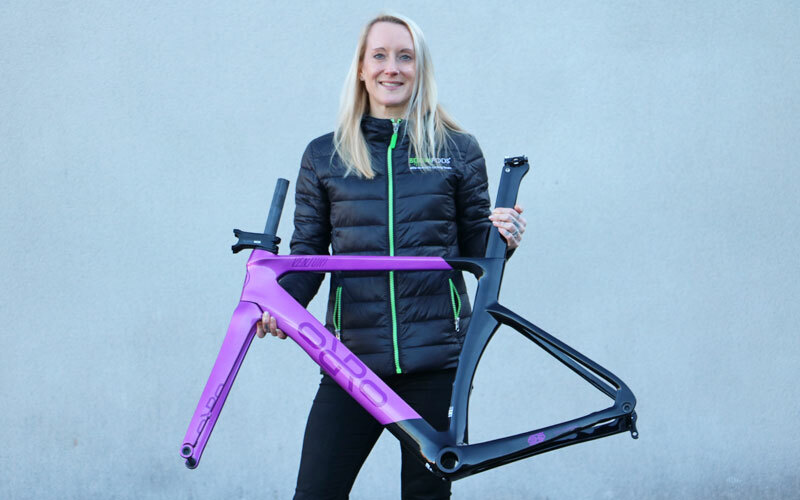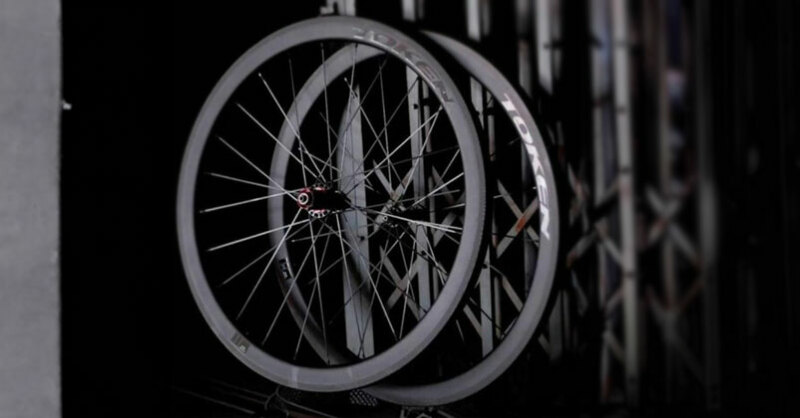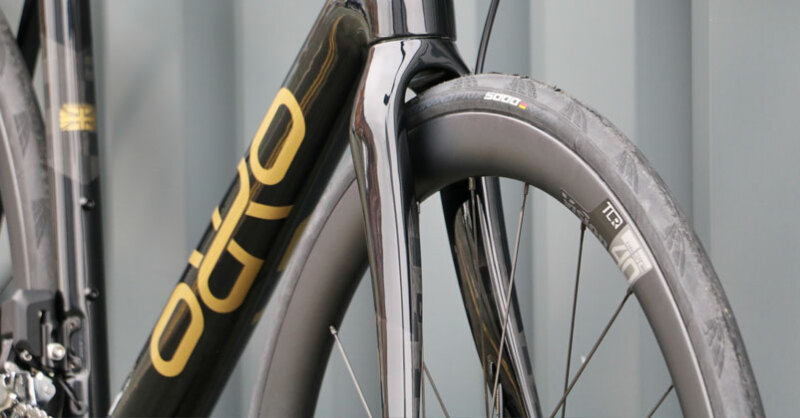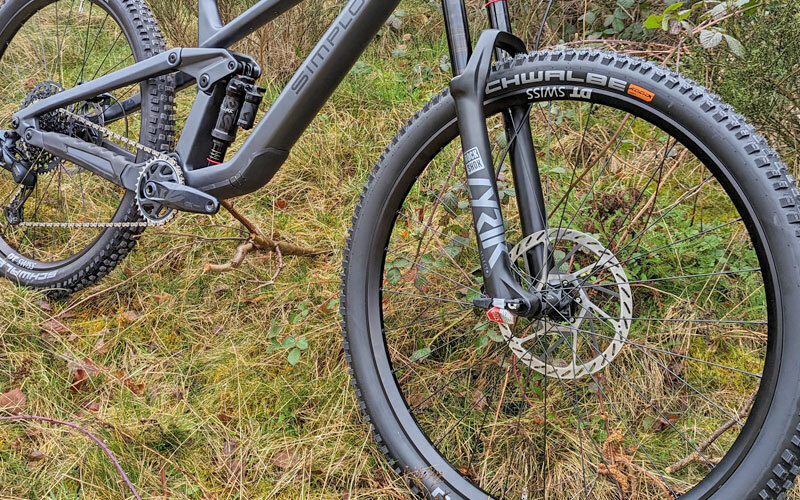Step-by-Step Road Bike Size Guide
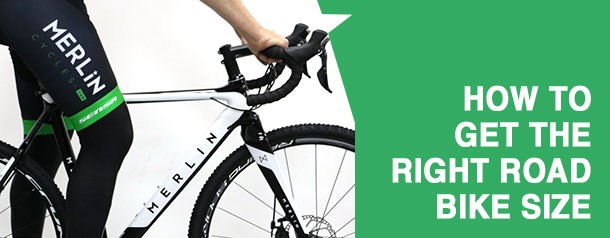
You shouldn’t underestimate the importance of choosing the right size of road bike. Not only can an ill-fitting bike negatively affect your comfort during a ride but it can also reduce your efficiency, and worse, put you at risk of developing an injury.
For efficient power transfer and handling, you need to find a bike that fits well. So how do you find the right bike size for you?
This road bike sizing guide explains everything you need to know, ensuring that you have the most enjoyable experience possible every time you get in the saddle.
Contents
- The road bike frame size guide
- Measuring your stand-over height
- Getting your saddle in the right position
- How to measure your reach on a road bike
- Measuring your ‘Ape Index’
- What is stack height and how do I measure it?
- Getting the correct road bike tyre sizes
1. The road bike frame size guide
This is your most important consideration.
Frame size is related to the seat tube length. For example, a 56cm frame will have a seat tube that is 56cm long. Here’s our definitive road bike frame size guide to help you.
Road bike size chart
| Height (inches) | Height (cm) | Frame Size (cm) |
|---|---|---|
| 4'10" - 5'3" | 148 - 160 | 46-50 (Extra Small) |
| 5'3" - 5'5" | 160 - 165 | 50 - 52 (Small) |
| 5'5" - 5'7" | 160 - 165 | 52 - 54 (Small - Medium) |
| 5'7" - 5'9" | 170 - 175 | 54 - 56 (Medium) |
| 5'9" - 5'11" | 175 - 180 | 56 - 58 (Medium - Large) |
| 5'11" - 6'2" | 180 - 188 | 58 - 60 (Large) |
| 6'2" - 6'5" | 188 - 196 | 60 - 62 (Extra Large) |
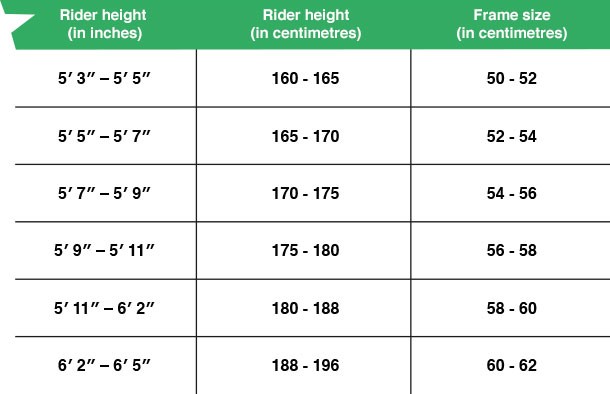
There are times when you may want to deviate slightly from the road bike size chart. For example, some manufacturers could label a bike as ‘Small’, whereas a different supplier could refer to the same bike as ‘Medium’. Checking a manufacturers geometry table for seat tube length and top tube length is a reliable way of confirming sizing so that you can purchase the perfect size for you.
Road bike sizing recommendations have changed in the past few years. This is because manufacturers now produce compact (sloping) frame designs with lower top tubes. That means somebody who fitted a 56cm frame in the 1990s will probably need a different size now.
Tip: Buying a bike is a bit like buying a suit: if you have any doubt with regards to sizing, it is wise to physically try sitting on/riding the bike first. The staff at Merlin are all experienced cyclists who can help you find the perfect bike for you, so come down to our Chorley showroom for a test ride. Alternatively, you can speak to us over the phone or by email.
Still unsure? Check out our guide to those who fall between bike sizes.
Click here to browse our range of bike frames.
2. Measuring your stand-over height
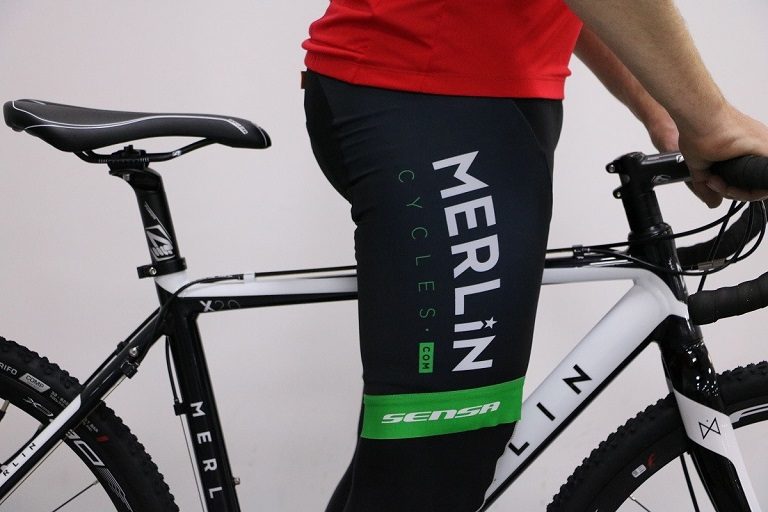
Simply put, your stand-over height is the distance between the top tube and the ground. This can have a major bearing on your overall comfort levels and your performance.
For the optimum size, there should be a few inches between your crotch and the top tube when you are standing barefoot with your legs straight and feet slightly apart.
If you have too much of a gap, the bike is too small; if you have no room to manoeuvre, it’s too big.
Know your inside leg measurement? This can be a good indicator of how high you need the top tube to be.
Important note: You need to take the style of the frame into account. For example, a compact frame will have a lower stand-over height than a traditional horizontal geometry frame because the top tube has a clear slope.

Tip – If you have a compact or semi-compact geometry frame, make sure you have enough clearance along the entire length of the top tube, especially near the head tube, as this is the highest point.
3. Getting your saddle in the right position
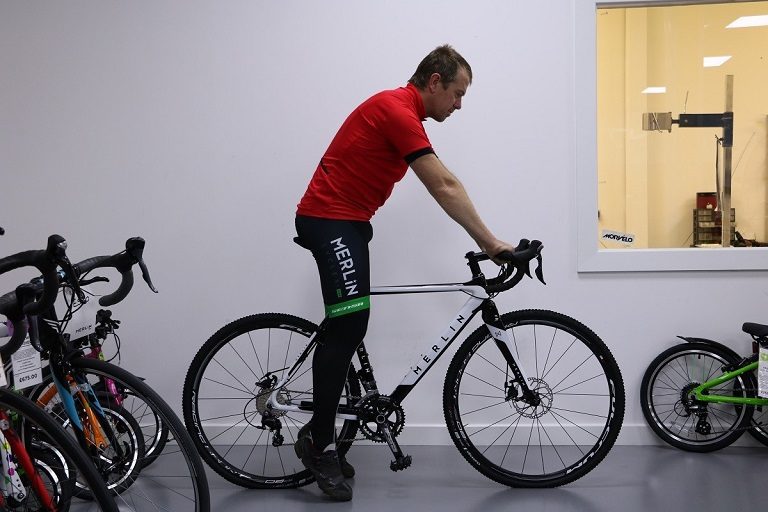
An adult cyclist should be able to touch the floor with their tip-toes while sat in the saddle. If you can’t reach the floor, your saddle is too high; if you can put the entire base of your foot on the ground, you’re too low.
Here are a few tips to help you get your saddle in the perfect position:
- Sit in the saddle and put the ball of your foot on the pedal with a slight bend in your leg: your leg should not be perfectly straight. Place your other foot on the floor.
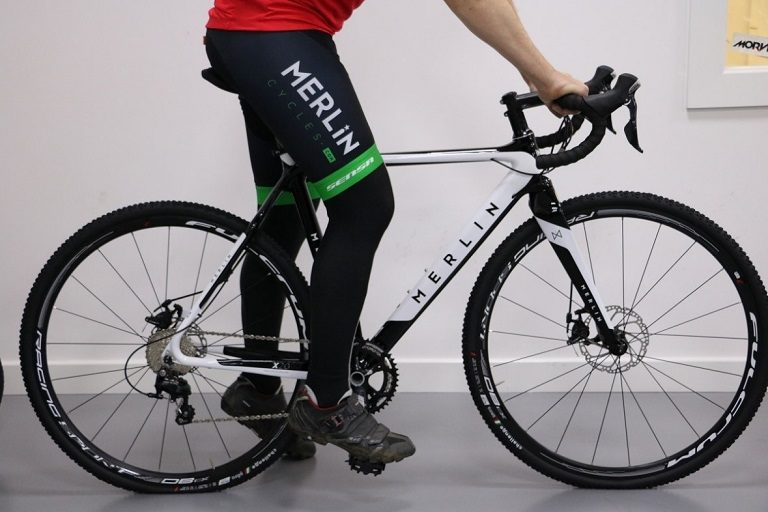
- You should find that there are a few inches difference between the saddle height and the size of your frame. Some of the seat post should be showing. Compact frames are smaller so more seat post will be showing and vice versa with traditional horizontal geometry frames.
- Make sure the saddle is level and not sloping forwards or backwards. This can be extremely uncomfortable (especially when cycling longer distances).
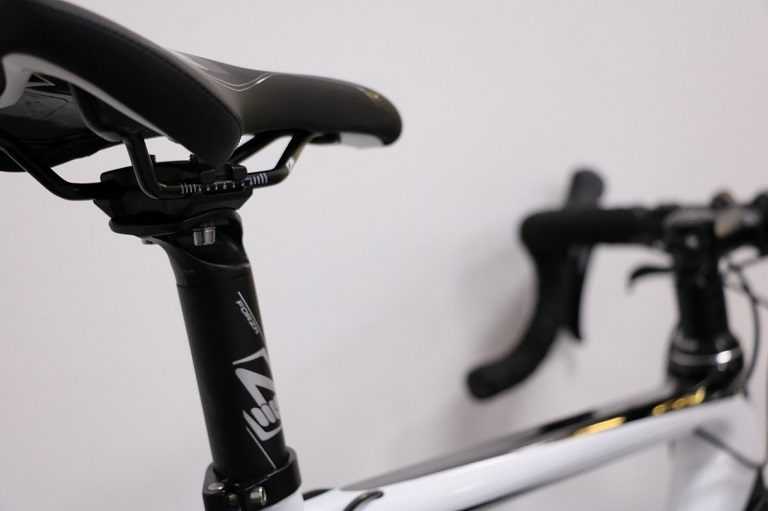
- Tweak the position of the saddle in the rails, moving it until you’ve got it exactly how you want it. Imagine a plumb line running straight down from the centre of the kneecap through the ball of the foot (which is over the pedal axle) in the 3 o’clock position. This is shown in the image below.

If you’re too far forward or back, it will not only be uncomfortable but you’ll also impact on your pedalling efficiency.
4. How to measure your reach on a road bike
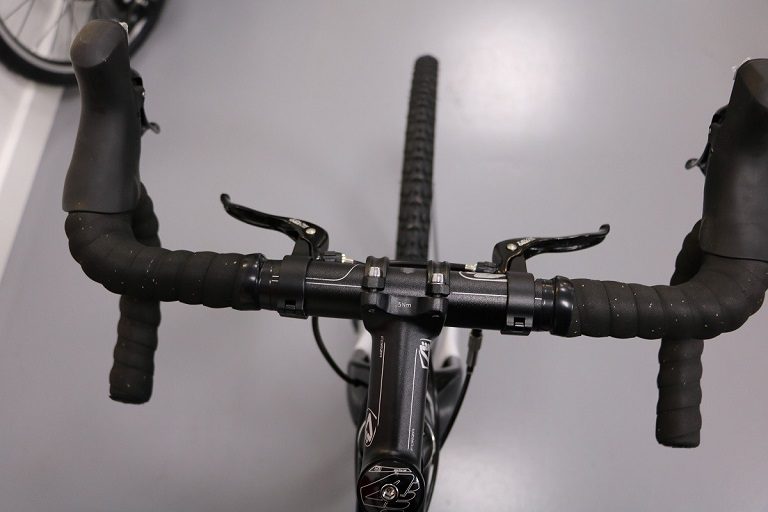
The ‘reach’ of a road bike is the distance between the saddle and handlebars. Finding the optimal reach depends on the length of your torso and arms. When determining your road bike sizing, understanding your reach distance is vital for both comfort and riding efficiency.
How to find your reach distance
- Sit in the saddle in a normal riding position and place your hands on the tops of the handlebars.
- Look down the bars. The front axle of your bike should be hidden from view.
- If the axle is in front of the bars, however, then the reach is too short. If the axle is behind, the reach is too long.
It may seem simple, but this is actually a tried-and-tested method and popular within the cycling community.
Reach distance can be changed by two factors on your bike:
- Saddle position
- Stem length
If you have the saddle in a comfortable fore and aft position, then changing the stem length can give you the correct reach.
Be careful when adjusting your reach, however. Go too long and the bike’s handling will feel slow and sluggish, but if it’s too short then the steering will be twitchy and uncomfortable.
5. Measuring your ‘Ape Index’
If you do want a more precise reach distance, a handy tool that we use is the ape index.
How to calculate your ape index:
- Measure your arm span in centimetres
- Deduct your arm span from your height
- The number that remains is your ape index
Your ape index can help you deduce whether or not you need a smaller frame size. If your arm span is shorter than your height by 5cm or more, then you’ll most likely need a smaller frame size.
However, if your arm span is bigger than your height by 5cm or more, then you should think about moving up to a larger frame size.
6. What is stack height and how do I measure it?
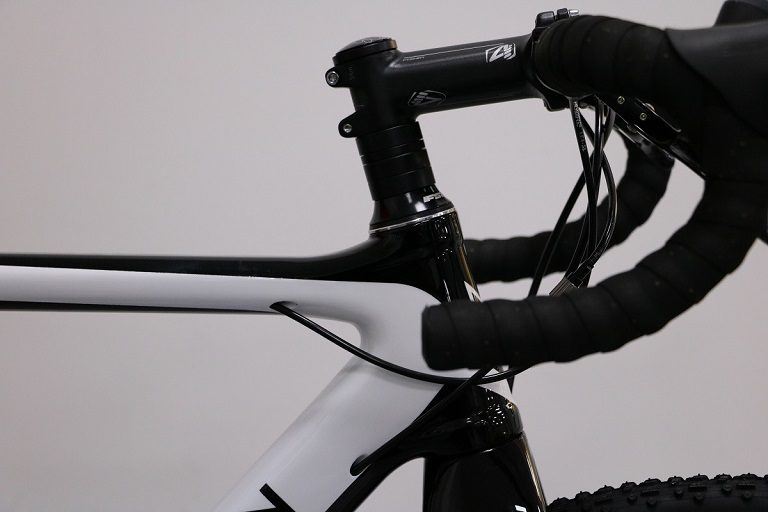
Stack height is the space between the bottom of the lower headset cup and the top of the upper headset cup. This is the part of the frame that the top of the fork goes into.
The stack height of the bike depends largely on the kind of bike it is. For example, sportive bikes tend to have a bigger stack height, while race bikes will usually have a shorter stack height for a lower front end.
Bikes with longer reach and lower stack height are generally more aggressive bikes; they ride harder and with more of an elongated, ‘stretched out’ geometry.
7. Getting the correct road bike tyre sizes
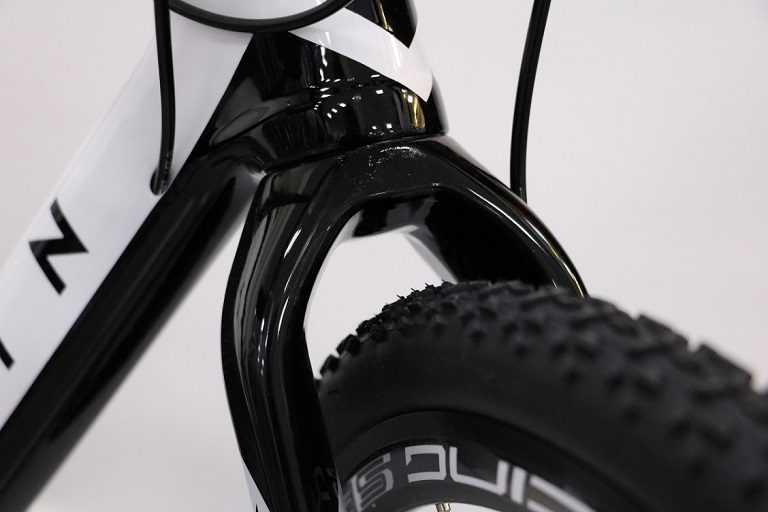
Looking for the right tyre size can feel a little like navigating a minefield at times, but understanding the particulars can help you get things spot on for a much easier ride.
On a road bike, tyre sizes are described using dimensions.
Example: If a road bike measures 700 x 25c:
- 700 is the standard rim size diameter
- 25c is the width of the tyre as you look down from a riding position.
Generally speaking, wider tyres provide a smoother ride as the volume of air in each tyre is larger. Tyre manufacturers now make lighter, faster tyres that are wider to meet the needs of today’s riders.
Several wheel manufacturers make wider 23mm or 25mm wide rims. These offer a high level of strength, performance and comfort when matched with wider 23mm/25mm tyres.
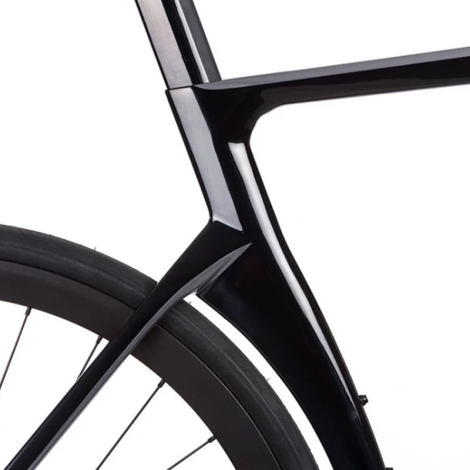
Most road bikes will have enough clearance to fit 25mm-wide tyres, which can offer a good amount of comfort for the rider. Newer disc-brake road, gravel and cyclocross bikes often have enough clearance for 35-38mm off-road tyres to cope with more challenging surfaces, such as mud and gravel.
You can see our tyre selection here.
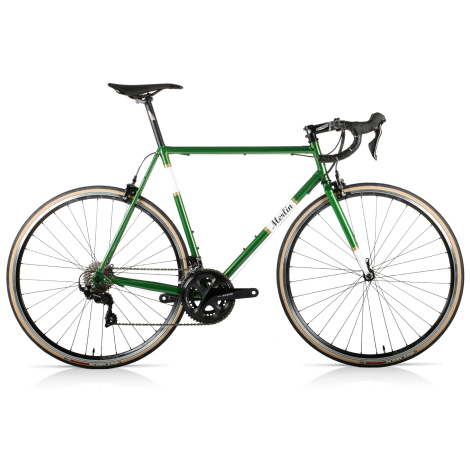
Get on the road today!
This road bike size guide will stand you in good stead, but if in doubt, feel free to give us a call on 01772 432431, or email sales@merlincycles.com, and we’ll help you out.


